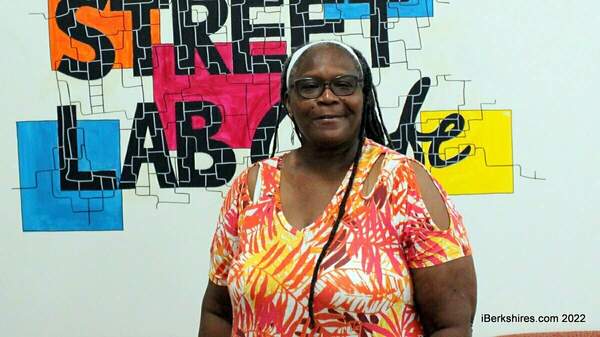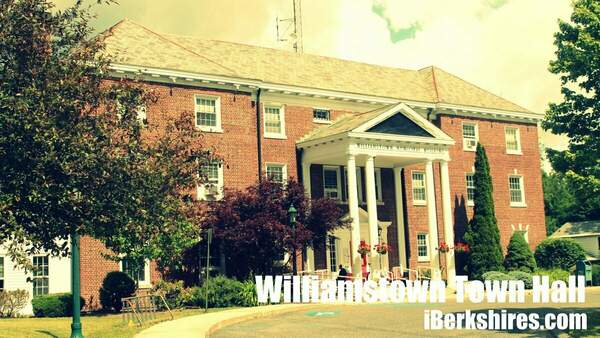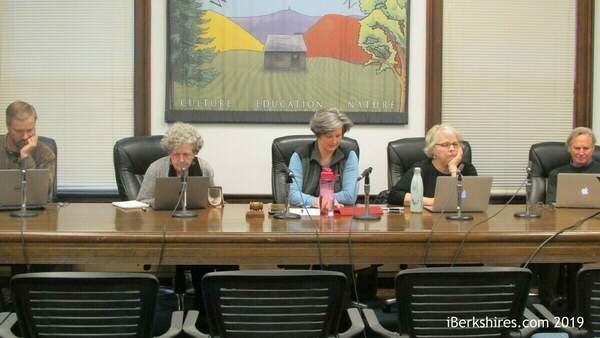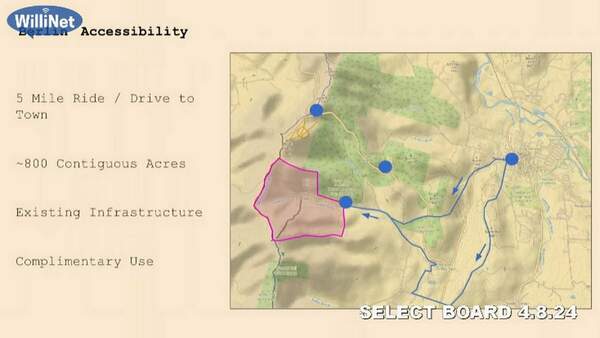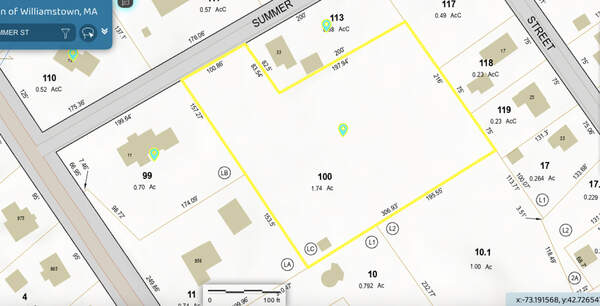Williamstown Housing Committee Looks to Study Burbank Property
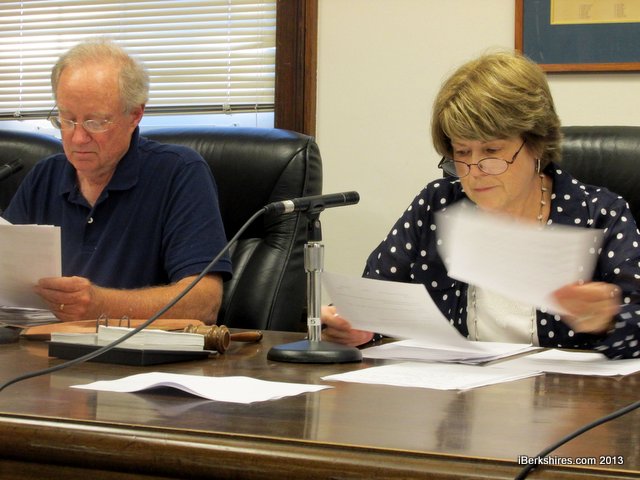 Van Ellet and Catherine Yamamoto review the minutes of past Affordable Housing Committee meetings during Tuesday's meeting. Van Ellet and Catherine Yamamoto review the minutes of past Affordable Housing Committee meetings during Tuesday's meeting. |
WILLIAMSTOWN, Mass. — The Affordable Housing Committee on Tuesday moved toward further study of both the Lowry and Burbank properties in its effort to determine whether either town-owned site is suitable for building subsidized housing.
AHC Chairwoman Catherine Yamamoto told her colleagues she had communicated with Guntlow & Associates about conducting a study on the 130-acre Burbank property.
On Monday, the Selectmen honored the committee's request to ask the Conservation Commission to consider releasing a portion of Burbank from its control. But the motion stipulated that said portion would be identified in "45 days."
Yamamoto reported that Guntlow said it could complete the work in that time frame. She read a letter from the local engineering firm saying it could do base mapping with work "including but not limited to" property lines, soils, topography and wetlands resources.
The committee discussed ordering a conceptual plan similar to the one Guntlow worked up for the Lowry property — only with perhaps more option and certainly with some community input.
According to the letter read by Yamamoto at Tuesday's meeting, Guntlow recognized that the lack of community comment was one of the complaints about the Lowry conceptual plan unveiled last December.
This time, it would hold a meeting with abutters to the property, the engineering firm said.
"Can you go back to them and see if they're also available to do the last phase [the meeting] for Lowry that didn't happen last time?" committee member Bilal Ansari asked Yamamoto.
Committee member Cheryl Shanks introduced a motion that the committee ask the Con Comm at its Thursday meeting to allow it to hire Guntlow or some other engineering firm to do the preliminary work at Burbank.
"And maybe go back and generate additional plans for Lowry," Shanks said. "One of the the criticisms of the Lowry conceptual plan was there was one plan and people became fixated on it. ... The fact that it's just a conceptual plan might be underlined and it might come across better if there were alternate sketches."
Shanks' motion passed unanimously at a meeting attended by five of the committee's members. Leigh Short was absent.
While continuing its efforts to "get the ball rolling" on Lowry and Burbank, the committee continued to make progress on two town-owned brownfield sites that are much closer to being developed.
Shanks reported that earlier Tuesday, the town had issued letters seeking a consultant to help housing committee with requests for proposals to develop the former town garage site at 59 Water St. and the former Photech mill site on Cole Avenue.
As with the proposed study of Burbank, community input is going to be an essential part of the planning process for the two brownfield sites. Part of the scope of services for a potential consultant is the coordination of a public listening session for the committee.
Shanks said the letters were mailed to four potential consultants already identified by the committee and carried an Aug. 12 deadline for applications. The committee hopes to issue one or two RFPs covering 59 Water St. and Photech as early as this fall.
Time is of the essence as the town races the clock to develop possible replacement housing for the residents who have lost their homes at the Spruces Mobile Home Park as a result of Tropical Storm Irene and those who could lose their homes if the town takes possession of the park and closes it under the terms of a federal Hazard Mitigation Grant.
However, on Tuesday night, the committee somberly noted that the time constraints created by the grant and the protracted process of developing new housing are a bad mix.
"Today, Higher Ground met with the Spruces residents, and it's beginning to sink in that it's unlikely housing will be built in the two to two-and-a-half years they have, and they will need to seek interim housing," said Yamamoto, who, along with Ansari, volunteers with Higher Ground, a non-profit created shortly after Irene.
"It's disappointing, very disappointing."
Member Van Ellet echoed that sentiment as the committee reviewed a projected timeline for the Federal Emergency Management Agency grant that Town Manager Peter Fohlin introduced at Monday's Selectmen meeting.
"Seeing it all laid out this way is pretty startling," Ellet said. "And, as you say, it's pretty sad. We've got two years, and at the speed progress is being made, it's a pretty tight fit."
Resident Suzanne Kemple asked Yamamoto and Ansari to keep their Higher Ground "hats" on for a moment and discuss the possibility of combining two potential private affordable housing developments in town.
Higher Ground this spring announced that along with three other partners, it plans to build housing on a nearly 4-acre parcel being donated by Williams College near the Proprietors Field senior housing development. Berkshire Housing Development Corp., which manages Proprietors Field and is one of the partners on the new project, had previously announced its intention to expand its senior housing, but the funding for that effort dried up and the plan reportedly has been shelved.
"Have you thought at all to try to combine those two projects somehow?" Kemple asked. "The state would look favorably on that. You have this clear need and a waiting list at Proprietors Field. I would think the state would love [a larger project]."
Ansari, the current president of Higher Ground, told Kemple that the idea is one that will be considered by the volunteer group's partners, who are professional developers and can better assess whether combining the projects makes sense for all concerned.
"It makes sense for us," Ansari said. "But does it make sense for those who put the money behind [the projects]? We don't know yet."
Tags: affordable housing, conserved land, Irene, senior housing,
 Van Ellet and Catherine Yamamoto review the minutes of past Affordable Housing Committee meetings during Tuesday's meeting.
Van Ellet and Catherine Yamamoto review the minutes of past Affordable Housing Committee meetings during Tuesday's meeting.

